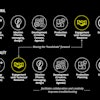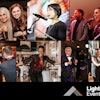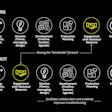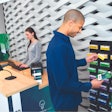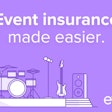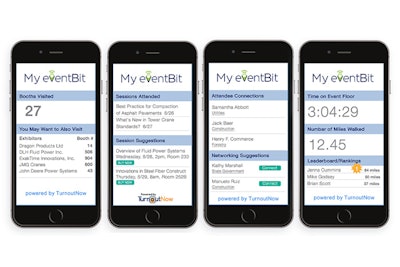
Most existing beacon-based data collection systems for events operate in the same way: small Bluetooth low-energy beacons are placed around a venue but rely on attendees to download an app and activate Bluetooth on their devices so the beacons can detect their movements. In that model, the quality of the data depends on the willingness of attendees to activate the technology the entire time they are at the event. That’s an unreliable strategy to collect meaningful data, according to Mike Godsey, senior vice president of market development at Experient. A better alternative, he says, is to flip that model by putting the transmitting beacons on attendee badges and using existing lead retrieval devices, which can be controlled by the show organizer and exhibitors, as receivers. That’s what Experient is now offering through its new system, Eventbit, powered by TurnoutNow, which it unveiled December 1 at I.A.E.E. Expo! Expo! in Baltimore.
“Every one of our customers wants to understand what’s really going on at their event,” Godsey says. “We produce the badge, we put the Eventbit on the badge and associate that transmitter to that attendee. And then we can read that transmitter—the Eventbit—with the entire network of readers we already have on the show floor. That’s what’s going to accelerate this thing. That lead retrieval network already exists, and we can make sure the Bluetooth is on.”
With the Bluetooth on, those existing lead retrieval systems—in exhibit booths, at breakout sessions, etc.—will be able to track the Eventbit beacons on the badges. Organizers can choose to place additional readers anywhere else where they want to track attendee behavior, for example in a networking lounge or in common areas. Individual exhibitors can also put additional receivers around their booths, or even in the pockets of booth staff to understand their engagement rates. The readers can detect the Eventbit from a range of as much as 100 feet, but Godsey says in most cases the data is more meaningful in a range of about five to 20 feet.
During the registration process, attendees will be asked if they want to opt in to Eventbit. Those who agree will have an Eventbit beacon on their badges that is tied to the general demographic information in their profile, for example company name and job title. This allows the system to generate reports on the type of people visiting specific booths and attending education sessions, as well as how long they stayed and where they spent the most time. But Eventbit will not transmit the names and contact details of individuals; exhibitors would need to do a traditional badge scan to collect that information.
Along with detailed real-time and post-event data for organizers and exhibitors, Eventbit will also generate information for attendees. During the event, guests can receive recommendations of booths and sessions that are similar to those they have already visited. After the event, organizers can send an “attendee justification report” with more detailed data. “Not only how much time they spent on the show floor and how much time in sessions, but which sessions they attended with links to click and instantly get that content back,” Godsey says. “And not only the 12 booths where you allowed yourself to be scanned in, but also the other 52 where you spent at least 10 minutes but didn’t give them your contact information. Now it puts the power in the hands of the attendees to reach back to those companies.”
Eventbit uses a proprietary beacon technology developed by TurnoutNow, which the company says will allow it to provide better data security.

